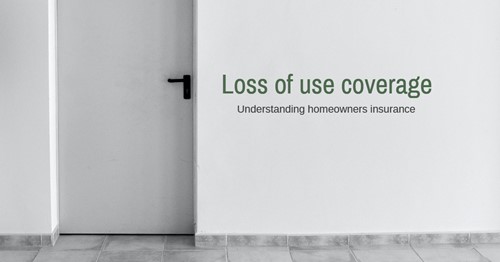
Loss of use coverage, or “coverage D,” is an important part of a standard homeowners insurance policy. While other parts of your policy can help you pay to repair damages to your home, loss of use coverage is there to help you while repairs are being made.
Depending on how long you have to wait before you can move back into your home, the total cost of your living expenses can increase dramatically. Luckily, loss of use coverage pays for a variety of essentials beyond the limit of your dwelling coverage.
Here is a quick guide to the kinds of additional living expenses covered by your loss of use insurance:
Additional living expenses covered
- Temporary residence such as hotel, motel or short-term rental.
- Moving costs.
- Grocery and restaurant bills.
- Storage of furniture and personal belongings.
- Laundry and dry cleaning services.
- Transportation costs.
- Parking fees.
- Pet boarding.
- Lost rental income.
Exceptions to consider
Flooding - Flood damage is handled separately from standard homeowners insurance policies. Therefore, if your home is uninhabitable due to flood, you won’t be covered by loss of use insurance during that time.
Earthquakes - Similarly to flood damage, earthquake damage requires an additional insurance policy. Without separate earthquake insurance, you’re financially responsible for repairs and any temporary living expenses.
Preexisting expenses - Loss of use insurance won’t cover any ongoing expenses you already had before the damage. This would include monthly mortgage payments, utility bills, property taxes and credit card bills.

Your insurance company can give you the details about any other important exceptions to loss of use coverage. The more you know about covered additional living expenses, the better peace of mind you’ll get from your homeowners insurance policy.
About the Author

Bill Aibel
Bill joined the Cambridge office of Coldwell Banker in 2009. Since then he has had impressive results in residential and commercial real estate listings and sales. His work has earned him one of the company’s highest distinctions. As a Coldwell Banker Premier Agent, he has placed in the top 50 agents in the New England Region several years running.
